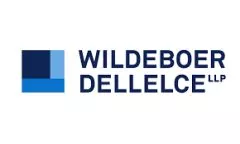Background
On September 22, 2016, the Canadian Securities Administrators (the "CSA") published their long-awaited proposals for an alternative funds framework (the "Proposals"). The Proposals involve amendments to a number of national instruments governing the formation and offering of investment funds, including National Instruments 81-101, 81-102, 81-104, 81-106 and 81-107. The Proposals establish a new category of "alternative funds", being publicly offered mutual funds that utilize alternative strategies or invest in alternative asset classes.
The CSA first proposed a new framework for regulating alternative funds in early 2013. The CSA however encountered significant challenges in defining the category and developing proposals for its regulation. This required them to advance a comprehensive regulatory review of non-redeemable investment funds in September 2014 and to lag publication of the Proposals. The CSA have requested specific comment concerning a number of provisions of the Proposals by December 21, 2016.
"Alternative Fund" Definition
The Proposals define an "alternative fund" as "a mutual fund that has adopted fundamental investment objectives that permit it to invest in asset classes or adopt investment strategies that are otherwise prohibited" by the investment restrictions in Part 2 of NI 81-102. Defining an alternative fund in this manner permits a sponsor to determine if a proposed offering is to be formed as a mutual fund, as a non-redeemable mutual fund ("NRIF") or as a non-investment fund. Examples of the latter are real estate investment trusts, mortgage investment entities, private equity funds and certain private lending platforms. The major impetus for sponsors to comply with the Proposals is the potential to distribute the securities of the alternative fund through both investment dealer and mutual fund dealer registrants. If this were to occur, this would be a significant step in the "retailization" of alternative funds since neither NRIFs nor non-investment funds are able to be distributed through mutual fund dealers. Although the Proposals largely align the regulation of alternative funds and NRIFs, importantly, no mention is made in the Proposals of permitting NRIFs to be distributed through mutual fund dealers.
Investment Restrictions
The centrepiece to the Proposals is the investment restrictions proposed to apply to the operation of an alternative fund. In summary, the Proposals are as follows:
Concentration Restriction – up to 20% of net asset value may be invested in a single issuer.
Physical Commodities – no limit on the percentage that may be invested directly or indirectly in physical commodities.
Illiquid Assets –may invest up to 10% of net asset value in illiquid investments with a "hard cap" at any time of 15% of net asset value. The CSA are seeking feedback on whether a higher illiquid asset limit may be appropriate in certain circumstances, and how best to make that work within the existing mutual fund framework.
Fund-of-Fund Structures – may invest up to 100% of net asset value in any other mutual funds or NRIFs where such investment funds are subject to NI 81-102.
Borrowing – may borrow up to 50% of net asset value. Importantly, it is proposed that alternative funds may only borrow from banks, trust companies or related dealers. There are further requirements that if the lender is an affiliate of the alternative fund's investment fund manager, then approval from the fund's independent review committee is required and any borrowing agreements must comply with normal industry practices and include standard commercial terms.
Short Selling – may short sell in aggregate securities equal to 50% of the net asset value.
Aggregate limits on cash borrowing and short selling – aggregate of cash borrowing and short selling may not exceed 50% of net asset value.
Use of Derivatives
- Dodd-Frank Relief – codifies relief already provided to mutual funds to trade in cleared swaps. This codification will result in a new defined term, "cleared specified derivative", meaning any derivative cleared through the mandated infrastructure.
- Counterparty Requirements – relieves alternative funds from section 2.7(1) of NI 81-102 allowing for a broader range of permitted counterparties but requires mark-to-market exposure to any one counterparty not to exceed 10% of net asset value. Subject to the general exemption for cleared specified derivatives, this amendment would require alternative funds to limit their mark-to-market exposure to 10% with any single counterparty.
- Cover Requirements – exemption from section 2.8 and 2.11 of NI 81-102 thereby permitting alternative funds to create synthetic leverage.
Leverage – the Proposals suggest that an alternative fund would need to make a daily leverage calculation as follows:
TABLE
The aggregate gross exposure for an alternative fund cannot exceed three times the fund's net asset value.
Seed Capital – a $150,000 seed capital requirement for alternative funds.
Proficiency – on the most significant aspect of the Proposals the CSA hedge by proposing the following:
"Given the unique features that will characterize alternative funds, such as the increased flexibility to create leverage and engage in potentially more complex strategies, the CSA recognize that it will be appropriate for additional education, training and experience requirements to apply to individual mutual fund dealing representatives who sell alternative funds. On this basis, it is reasonable to consider whether, in order to satisfy the general proficiency principle that applies to all registrants, specific training would be necessary for an individual dealing representative to understand the structure, features, and risks of any alternative fund securities that he or she may recommend. From this perspective, we are engaging with the MFDA in order to determine the appropriate proficiency requirements for dealing representatives of mutual fund dealers trading in securities of Alternative Funds. This work will be parallel to our ongoing work with the Proposed Amendments and we will ensure that it has been completed before the Proposed Amendments would come into force. We also note the CSA's ongoing consultations with respect to the proposals to enhance the obligations of dealers and representatives generally, as outlined in CSA Consultation Paper 33-404 Proposals to Enhance the Obligations of Adviser, Dealers, and Representatives Towards Their Clients, which will also inform our work in this regard."
Disclosure – non-listed alternative funds to be offered under NI 81-101 with enhanced simplified prospectus, annual information form and point of sale disclosures. Presumably listed alternative funds will continue to be offered under the prospectus Form 41-101F2. Amendments are being finalized to implement a summary disclosure document similar to the Fund Facts, that will be prepared in respect of mutual funds and, it is expected to also apply to alternative funds, which are listed on an exchange. The CSA are also proposing additional disclosure requirements, including disclosure regarding how alternative funds differ from other mutual funds in terms of investment strategies and permitted asset investments.
Financial Statements – requirement to include in the Management Report of Fund Performance the "Leverage Disclosure Requirements".
Transition – propose that new alternative funds must comply three months from when the Instrument is promulgated. Existing alternative funds will need to come into compliance within six months of the Instrument being published.
Implications of the Proposals
In addition to the above Proposals, the Proposals in their current form suggest a number of changes to the regulation of conventional mutual funds and NRIFs. Generally, the tone of the Proposals is to liberalize further the regulation of conventional mutual funds (see, for example, the holding of physical commodities, the holding of investments in NRIFs and cleared swap relief). The tone for NRIFs is not so benign - the Proposals attempt to justify further limitations on the operations of NRIFs such as limits on concentration, illiquid assets, borrowing and aggregate leverage on the basis that most such funds have these restrictions imposed on them by underwriters when they are formed. If the Proposals are maintained in their current form it seems clear that most sponsors of alternative investment products seeking to find a retail audience will either fit within the alternative funds regime or seek to avoid the investment fund regulatory scheme in its entirety by delivering the investment product through a principal-at-risk note, segregated fund or non-investment fund platform. The current limits and the proposed restrictions to be placed on NRIFs, coupled with the inability to reach the entire mutual fund dealer universe, will likely be the death knell for these products. This is a shame as virtually all innovative investment techniques and asset classes over the past 20 years in the Canadian retail investment fund industry have been incubated through the delivery of closed-end investment funds whose structure, offering and disclosure is disciplined by experienced corporate finance professionals at investment dealers.
The content of this article is intended to provide a general guide to the subject matter. Specialist advice should be sought about your specific circumstances.


